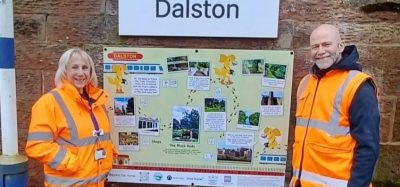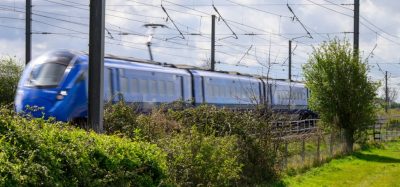Solving problems and creating a better world with digitalisation
Posted: 12 December 2019 | | No comments yet
Global Railway Review spoke to Thymo van den Brug at ProRail to discover how he creates digital solutions to the company’s problems and how ProRail is taking the first steps to creating a better world.
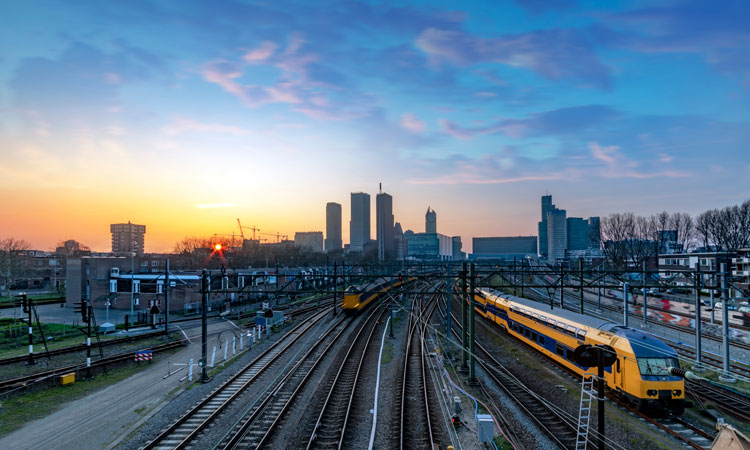

ProRail is responsible for the Dutch rail network – the busiest in Europe, enabling 1.1 million train journeys every day. It is also a front-runner when it comes to digitalisation, recently significantly accelerating its innovation efforts in the areas of digital train operation and asset management, as well as the use of new technologies such as the Internet of Things (IoT) and big data. It also doesn’t shy away from trying to solve world issues with the use of digitalisation, making efforts to be sustainable and green. With so much potential afforded by digitalisation, how does it begin to narrow down which innovation to implement next?
“The root of digitalisation is to start by looking at opportunities or problems in your business and try to really help those problems get solved,” said Thymo van den Brug, Manager of Development, Asset Management Information at ProRail, when we ask him. “It helps if you can create a showcase where other people in the business can relate to and can touch so they can know what the next step is for themselves. Improvement will come eventually, but it’s nice if you can just help somebody solve that problem by using data or using an algorithm. Then it’s more likely to be implemented, because otherwise the thing you bring along may be nice but no-one is waiting for it, or people are not as open to listening to you and then it might not get implemented.”
“So it’s about creating a solution to the problem your colleague worries about before they fall asleep. If you can help in a digital way, it helps you create a mindset that digital can help the business.”
Creating a new world with data and digitalisation
As the self-proclaimed ‘Dataman’ of ProRail it’s not surprising that Thymo strongly believes in the power of data to solve the business’ problems. “Part of the job is creating a new world not based on problems, but based on possibilities. But it’s interesting to relate to the real business goals and the real business problems,” he told us. “Otherwise, you are just floating around being the guy with the nice things, but not the guy that helps me solve my problem. So what really helps is using data to create different estimates and insights that they didn’t have before, or correlations that they didn’t see earlier, or maybe calculate options that are beyond human possibilities because we have a computer that can do a million type of calculations.”
“Sometimes the computer gives them insights on things that they didn’t know of and it’s interesting, you should always work together with people that know about new technologies and people that know the real business. If you combine them, it helps to create the most valuable product for them.”
Data can, of course, be used to improve a variety of aspects within a rail system, but Thymo’s focus is on how it can improve assets.
“We look at what assets performed worst in the network, and then we try to find out if we can help overcome the problem using data,” he explained. “So, sometimes we use data that’s already there, but we use it for different purposes now. There’s so much data that we don’t use. So we don’t always have to buy new sensors or new cameras or things like that. But we need to have the flow of data. And what we do is we work in scrum teams on specific topics to create answers to the questions we have and then we evaluate if it’s the product we want and then we continue that.”
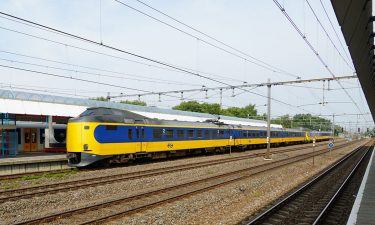

ProRail’s focus is on running more trains and it is using data to do just that.
“We collect data for different reasons, not just for analytics. But now it’s gone a step further and we can do things like tap off the data that we don’t need and use what’s left to solve the problem. Or we collect the data from the data streams and then we combine it in a data lake (that’s where we put the data in together) and then our data can combine with other data to create insights. So that’s what we do a lot. And sometimes we buy new sensors. Sometimes we try new things on rolling stock, for example.”
Collecting data is an important and time-consuming step, but, once it’s been collected and analysed, the benefits are clear.
“Data eventually helps more trains run or it can prevent a train from not driving. Our focus is on driving as many trains as possible and, to do so, we have to prevent disruptions. So we focused on the assets that are the most expensive or the assets that are the most risky or fail the most. And what’s interesting is that in the Netherlands, trespassers that walk next to the railway are one of the biggest problems of delay of trains. So instead of only focusing on assets, we also try to focus on recognising where trespassers are so we can send our security. So algorithms not only help the asset side, but also the non-asset side to find the most likely time and place a trespasser might decide to walk on the track.”
Collecting data from different sources
Data can be collected in a variety of ways, and ProRail uses many of the resources open to it.
“We use data from weather, from schools, from holidays, from location and also history. We also use public data and sometimes we buy data – weather predictions are particularly interesting for us, so that’s the data we buy. You can also use mobile phones, for example, to measure the comfort of the railway. It’s interesting. If you have 1,000 phones doing it, then you’re getting a measurement of the railway track.”
ProRail is also committed to being a digital company in its own right, collecting its own data and using its own algorithms to fully utilise it.
“We contract measurement trains, we contract helicopters and we contract drone companies to collect data for us. The goal is to get the data ourselves, and then we put it all in our own data lake. But we’re really driving to have our own data sets and sometimes, when we order an algorithm, we also want the intellectual property of the algorithm because in the future we want to use the algorithm again for a different purpose, or improve it, or we want to combine different data streams or algorithms.”
“We get the intellectual property because, without it, you only get the output of the algorithm and if there’s a disturbance on the switch for example and we don’t know how the algorithm is created, then we cannot fix it or use it in combination with other algorithms. It also means we can improve it ourselves.”
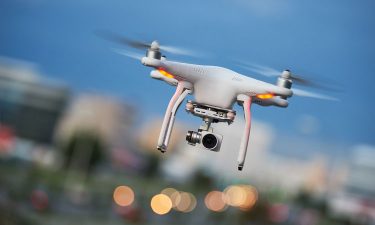

Drones have been used to collect data.
Thymo is particularly interested in sharing the digitalisation initiatives and knowledge the company has gathered to make a better rail network around the world, looking to the bigger picture to ensure the digital revolution reaches rail networks in all countries.
“We recently published our first algorithm, and I’m really proud of it because I think it’s interesting that all rail companies are looking at the same thing. So if I can copy something from another network, that would be really beneficial. But no-one has made the first step to do this, so we decided to make the first step and we shared the algorithm we created on the internet.”
“So now everybody in the world can use a little bit of our programme to create a better railway. The thing is, we’re not in competition with each other – well vendors are, they want to make money – but I want to create a better world. So we started this by sharing the algorithm and we hope that other parties will participate or will also pick up the algorithm and improve it and then publish it again. So step-by-step we get better as a whole.”
“I also sent it directly to other rail networks so they can use it immediately. We asked them if they have something to share with us so we’re waiting to see what’s happening with that. It’s about learning from each other.”
The importance of digitalisation showcases
There has been some discussion that a challenge when trying to implement digitalisation initiatives is changing the mindsets of those in the industry to start thinking in a more digital way and acknowledging that change needs to happen.
“It’s sometimes hard to change mindsets,” Thymo said, “but I’m not so negative about it because we all use an iPad or something like that at home, and we use it all the time. I know not everybody will change towards the digital way of working, but I think it’s not as hard as everybody says. You should really give them something that will help create a nicer workplace. What really helps is to have ambassadors who can really talk about the digital change, so people can see that this is the next step.”
Thymo also believes in the power of showcasing new digitalisation initiatives, saying that people are more likely to implement something that they have physically seen. “We do ‘show and tells’ all the time,” he told us. “And we create proof of concepts so people can see the solutions to their problems.
“You really need a combination of smart data scientists, for example, and hardcore railway personnel; if you put them together and you let them talk or you let them create, then new innovations will be implemented. Let them talk about their problems or their dreams, and they can create something out of it. And that really works at ProRail because then you have a showcase which you can present, and then people get enthusiastic.”
Nowadays our new innovations start from the bottom up rather than the top down.”
“What happens is that we create those new proof of concepts, and then people start to talk about it, and then those people sometimes come up to us and say, ‘Oh, we have a problem, can you help us?’ So what happens is that instead of just bringing it to the business, the business is now asking us to help them. And it’s happening more and more.
“So, nowadays, our new innovations start from the bottom up rather than the top down. And that’s good to put even more effort and power into the chain, because we really believe in what we do.”
Attracting passion
Digitalisation goes well beyond data, with varying paths it can go down. To keep to the right path ProRail has several digital roadmaps to map out the digitalisation initiatives it plans to implement.
“The digital roadmaps help us to think of the next steps, but we need better data and better people to use the data. We’re at the point where we will soon create a digitalisation programme for the whole company. But we need new people in the company that can help us with data because it’s really hard if you don’t know how to do it.”
“But then you have to compete with other industries, and then it’s sometimes hard to find the right people. But we have a unique selling point in that we are a green company, so we have a focus on the environment and we want to improve the world and improve the way of travelling.”
“The showcases I mentioned earlier sometimes also attract young people with a passion for technology and data. So that will help with the roadmaps, but I think we need more of them. If we can have people that can really look at the data, we can improve our pace with change.”
The rail industry isn’t old fashioned
I’ve spoken to other industries, and they love the way we look at data and they love the way we do data science and they sometimes even ask if they can we copy some of our methods.
“I’ve heard people say that the rail industry is old fashioned and I told them to never say that again, please,” Thymo said. “You don’t know what I’m doing. I’m not old fashioned. We’re doing really fantastic new things. The same goes for the industry itself: stop being negative. The things we do are really positive and good, we can be proud of it and we should share it. Of course some other industries are much faster or better, but they have more money, and I think what we do is great.”
“I’ve spoken to other industries, and they love the way we look at data and they love the way we do data science and they sometimes even ask if they can we copy some of our methods. We can be proud of the things we’ve already achieved and how safe the railway is. It’s really positive and it helps to show and tell the change we are doing.”
Thymo has said that, even though other industries are impressed with some of the digitalisation initiatives the rail sector has implemented, it’s still hard to connect with many other industries because they see rail as old fashioned. How does he think we can change people’s opinion of the rail sector as a whole?
“We ourselves need to talk about how good we are with change or what we are proud of. And we can’t be saying that the digital revolution is far away and implementations will take 20 years or so,” he answered. “I want to see results within three weeks or three months, not 20 years! My personal opinion is that then you should always try to discuss potential performance improvements in the short term. People don’t get enthusiastic if you have to wait 10 years before you can do something.”
We need to work together to create a better world…”
“For me, it’s hard that peoples’ main aim is to make money… I mean, I understand, of course, but for me it’s also about improving performance for customers. I travel by rail every day, and I want to have a nice journey and I want to have my train on time. Of course people still want to make money, so we need to find a new business model where they can make money whilst also improving services. I don’t know how to do it, but it’s one of the things in my mind. But we need to work together to create a better world.”
“Everybody is talking about how hard it is to work together and collaborate, but it’s easy: we did it with our algorithm. It’s one small step for rail personnel, one giant leap for mankind!”
Related topics
Augmented Reality (AR), Big Data, Digitalisation, Internet of Things (IoT), Interoperability & Liberalisation, Operational Performance, Rolling Stock Maintenance, Rolling Stock Orders/Developments, Safety, Standardisation & Technical Harmonisation, Sustainability/Decarbonisation, Technology & Software, The Workforce, Track/Infrastructure Maintenance & Engineering, Training & Development





